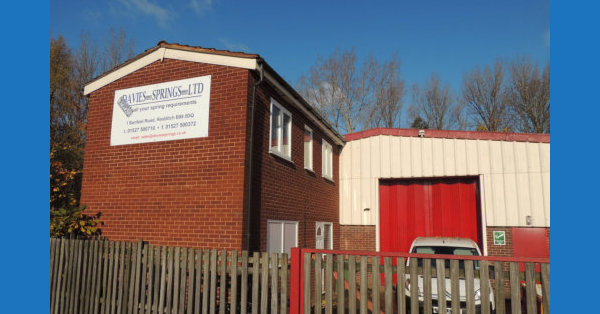Davies Springs Online Compression Springs Catalogue
Springs – Time For A Change…
Springs in the UK tend to be sold in imperial measurements – and yet more and more of the manufacturing world is converting to metric measurements. On this site you will find a huge range of springs in metric measurements.
You can select from:-
- Outside Diameter mm
- Wire Size mm
- Free Length mm
- Rate n/mm
- Material
Pricing is very simple.
You will see a minimum quantity which you can order which you will notice is roughly £50. As you order more the price falls as you would expect. The pricing tables on this website go up to 2000 but here at Davies Springs our machines are capable of producing many thousands of springs quickly so if you want more please enquire.
When you click the Read more button you will see more details about the spring in question.
All springs are made to order.
That is, why we do not let you click and pay because we do not hold every permutation of wire in stock – we will buy in your wire to make the spring for less popular sizes.
As a rough guide please allow 15-working days for production.
All pricing is Ex-works. We can deliver anywhere in the UK, or Europe on receipt of your enquiry we will quote an estimated delivery date and the cost of delivery.
All pricing will be subject to VAT if applicable at the relevant rate.
Any questions please ask – we have a friendly helpful reputation which we are keen to keep.
Where Do Standards Come From?
The most common train track gauge of 4 feet 8.5 inches (1,435 mm) is a historical accident, stemming from the dimensions of early British wagonways used for coal transport. These dimensions were then adopted by the Stockton & Darlington Railway, and later by the Liverpool & Manchester Railway, becoming the standard when locomotives were introduced. While the initial measurement was 4’8″, the extra half-inch was added to reduce binding on curves.
Early wagonways:
The first wagonways, used for hauling coal, were built with a gauge of 4 feet 8 inches.
Stephenson’s influence:
George Stephenson, a key figure in early railway development, used this gauge for the Stockton & Darlington Railway and later for the Liverpool & Manchester Railway.
Evolution to 4’8.5″:
As locomotives became larger and had to navigate curves, the extra half-inch was added to reduce wheel binding on curves.
Standardization:
This gauge was later adopted as the standard gauge in Britain and then spread to other parts of the world, particularly with the British Empire’s influence on railway construction.
Questions Welcome
Please telephone 01527 500 710 if you have any questions.
Office Hours
Monday – Thursday
8.00am to 4.30pm
Friday 8.00am to 12.30pm
Saturday / Sunday Closed







